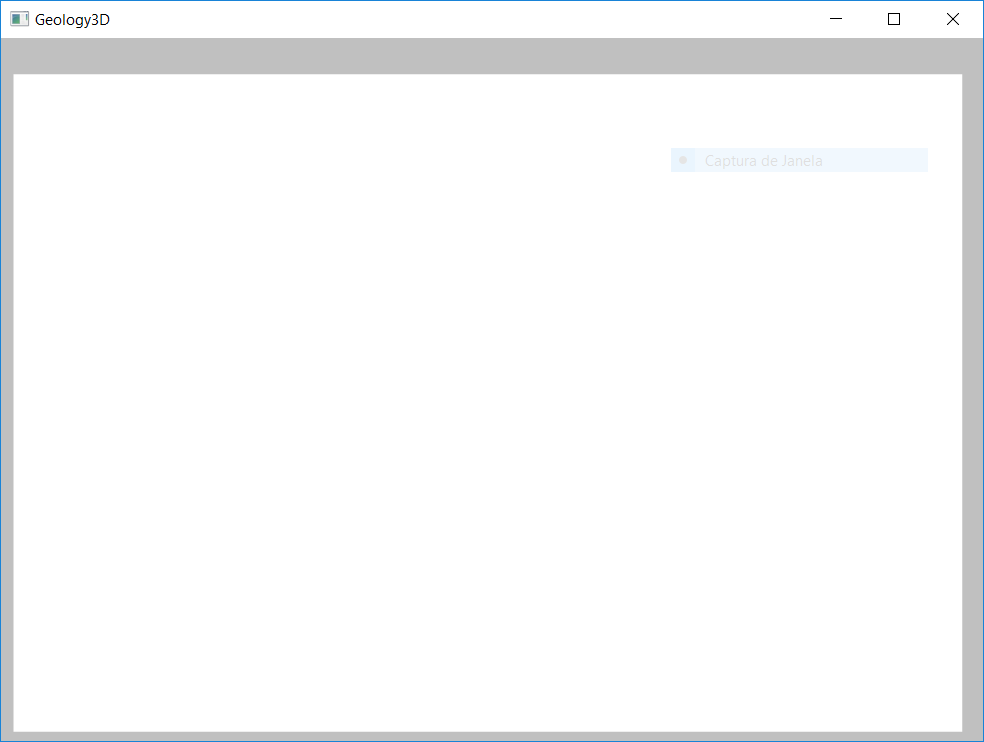Viewport3D (C#)在画布中(XAML)
Viewport3D (C#)在画布中(XAML)
提问于 2018-07-09 03:54:06
我是WPF的初学者,所以我不太明白C#是如何与XAML一起工作的。
我试图制作一个软件来绘制和操作三维几何。我跟踪了这个例子关于如何创建一个3D场景,并取得了成功。
但是,当我试图将Viewport3D放在XAML中的canvas中(以便在UI中放置按钮等其他元素来操作3D场景)时,我无法理解为什么Viewport3D没有出现。
我不想在XAML中定义Viewport3D的所有内容,因为我计划进行更复杂的几何绘制和操作操作。我认为最好在C#中这样做。
来自MainWindow文件的C#文件在XAML文件上不是相同的吗?
这是我看到的窗户:

以下是代码:
XAML
<Window x:Name="Geology3D_MainWindow" x:Class="Geology3D.MainWindow"
xmlns="http://schemas.microsoft.com/winfx/2006/xaml/presentation"
xmlns:x="http://schemas.microsoft.com/winfx/2006/xaml"
xmlns:d="http://schemas.microsoft.com/expression/blend/2008"
xmlns:mc="http://schemas.openxmlformats.org/markup-compatibility/2006"
xmlns:local="clr-namespace:Geology3D"
mc:Ignorable="d"
Title="Geology3D" Height="600" Width="800" Background="Silver">
<Canvas x:Name="Canvas3D" Background="White" Margin="10,29,16.6,7.4">
<Viewport3D x:Name="ViewPort3D">
</Viewport3D>
</Canvas>
</Window>C#
using System;
using System.Diagnostics;
using System.Collections.Generic;
using System.Linq;
using System.Text;
using System.Threading.Tasks;
using System.Windows;
using System.Windows.Controls;
using System.Windows.Data;
using System.Windows.Documents;
using System.Windows.Input;
using System.Windows.Media;
using System.Windows.Media.Media3D;
using System.Windows.Media.Imaging;
using System.Windows.Navigation;
using System.Windows.Shapes;
namespace Geology3D
{
/// <summary>
/// Interaction logic for MainWindow.xaml
/// </summary>
public partial class MainWindow : Window
{
public MainWindow()
{
InitializeComponent();
//Viewport3D ViewPort3D = new Viewport3D();
Model3DGroup ModelsGroup = new Model3DGroup();
ModelVisual3D GModelVisual3D = new ModelVisual3D();
GeometryModel3D CubeGeometryModel = new GeometryModel3D();
GeometryModel3D PlaneGeometryModel = new GeometryModel3D();
PerspectiveCamera Camera = new PerspectiveCamera();
// Specify where in the 3D scene the camera is.
Camera.Position = new Point3D(-5, 5, -5);
// Specify the direction that the camera is pointing.
Camera.LookDirection = new Vector3D(1, -1, 1);
// Asign the camera to the viewport
ViewPort3D.Camera = Camera;
// Define the lights cast in the scene. Without light, the 3D object cannot
// be seen. Note: to illuminate an object from additional directions, create
// additional lights.
DirectionalLight GDirectionalLight = new DirectionalLight();
GDirectionalLight.Color = Colors.White;
GDirectionalLight.Direction = new Vector3D(-1, -1, -1);
ModelsGroup.Children.Add(GDirectionalLight);
// The material specifies the material applied to the 3D object.
// Define material and apply to the mesh geometries.
DiffuseMaterial BlueMaterial = new DiffuseMaterial(new SolidColorBrush(Colors.DodgerBlue));
DiffuseMaterial PlaneMaterial = new DiffuseMaterial(new SolidColorBrush(Colors.Gray));
CubeGeometryModel.Material = BlueMaterial;
PlaneGeometryModel.Material = PlaneMaterial;
// Apply the mesh to the geometry model.
CubeGeometryModel.Geometry = DrawCube();
PlaneGeometryModel.Geometry = DrawPlane();
// Apply a transform to the object. In this sample, a rotation transform is applied,
// rendering the 3D object rotated.
RotateTransform3D GRotateTransform3D = new RotateTransform3D();
AxisAngleRotation3D GAxisAngleRotation3d = new AxisAngleRotation3D();
GAxisAngleRotation3d.Axis = new Vector3D(0, 1, 0);
GAxisAngleRotation3d.Angle = 0;
GRotateTransform3D.Rotation = GAxisAngleRotation3d;
CubeGeometryModel.Transform = GRotateTransform3D;
// Add the geometry model to the model group.
ModelsGroup.Children.Add(CubeGeometryModel);
ModelsGroup.Children.Add(PlaneGeometryModel);
// Add the group of models to the ModelVisual3d.
GModelVisual3D.Content = ModelsGroup;
ViewPort3D.Children.Add(GModelVisual3D);
}
MeshGeometry3D DrawCube()[...]
MeshGeometry3D DrawPlane()[...]
}
}回答 1
Stack Overflow用户
回答已采纳
发布于 2018-07-09 04:33:12
如果打算覆盖UI元素,那么在网格中嵌套画布和Viewport3D可能更容易。
<Grid>
<Viewport3D>
...
</Viewport3D>
<Canvas/>
</Grid>这样,视图和画布将始终具有相同的大小,添加到画布中的元素将始终位于顶部。
页面原文内容由Stack Overflow提供。腾讯云小微IT领域专用引擎提供翻译支持
原文链接:
https://stackoverflow.com/questions/51238016
复制相关文章
相似问题

